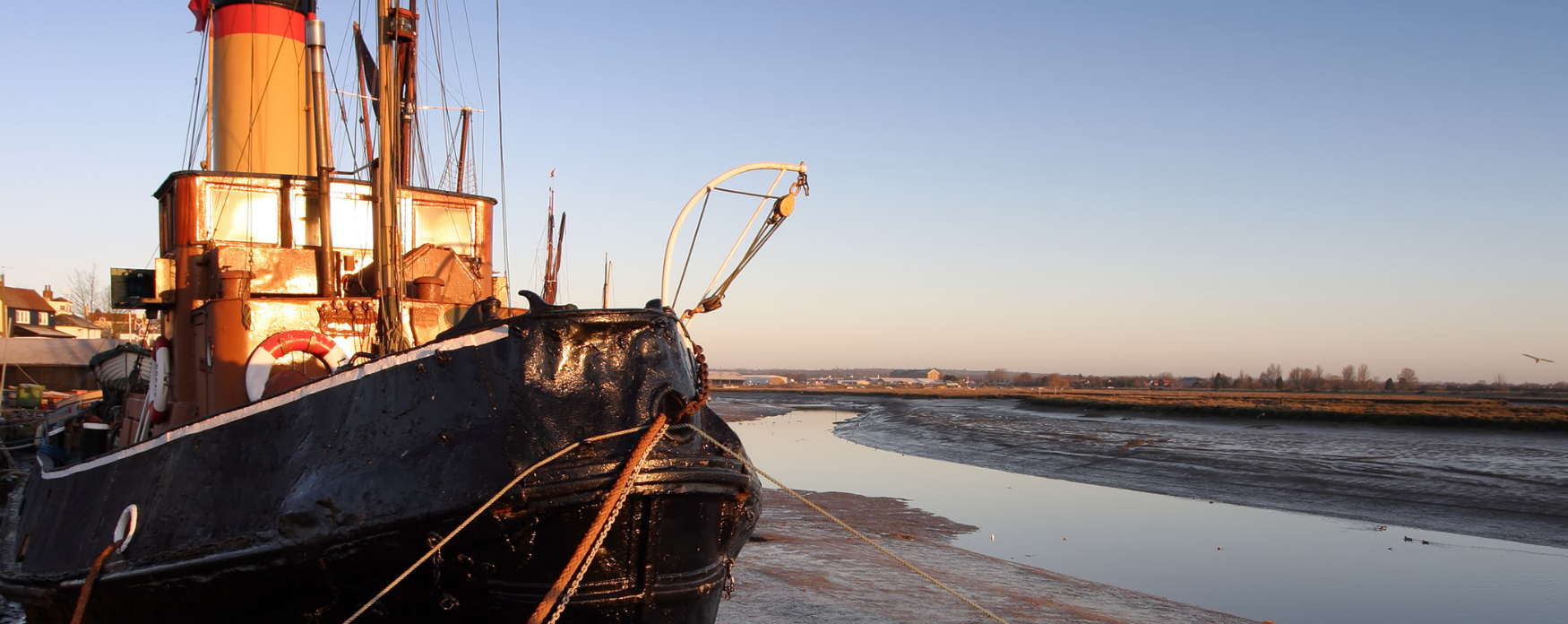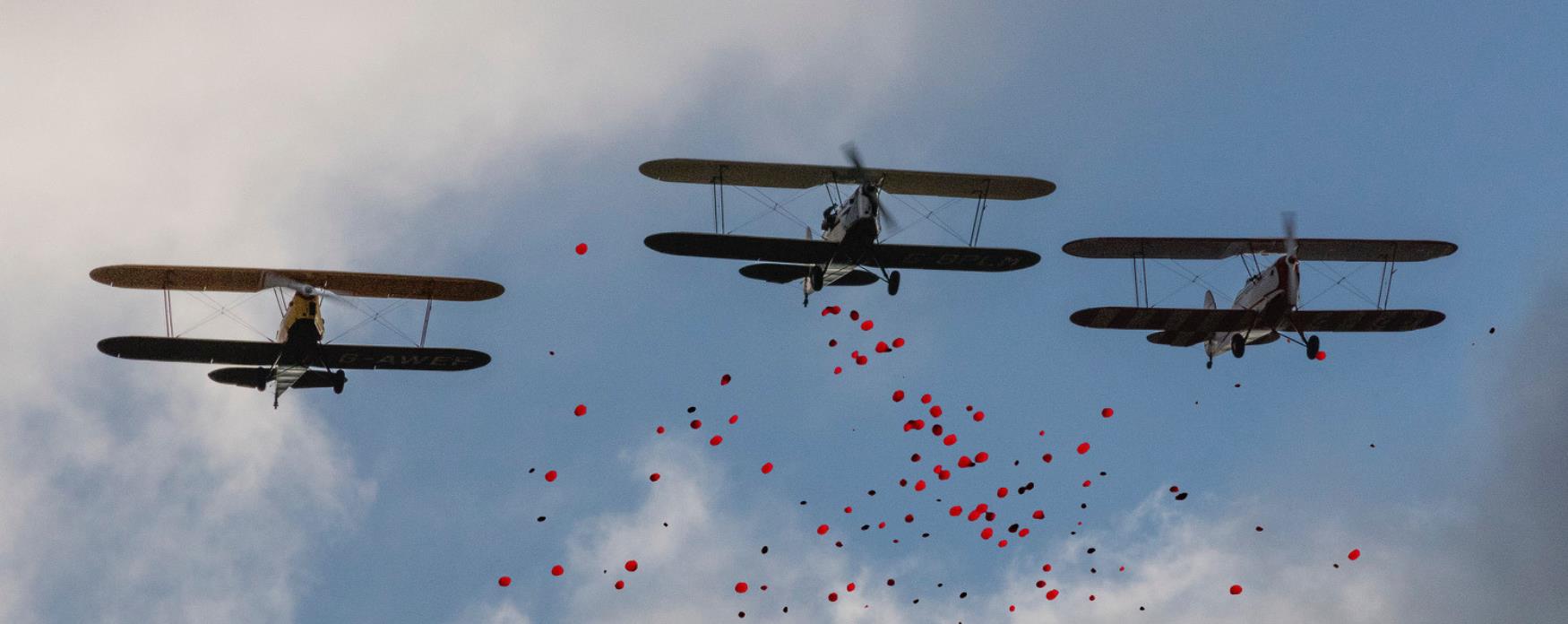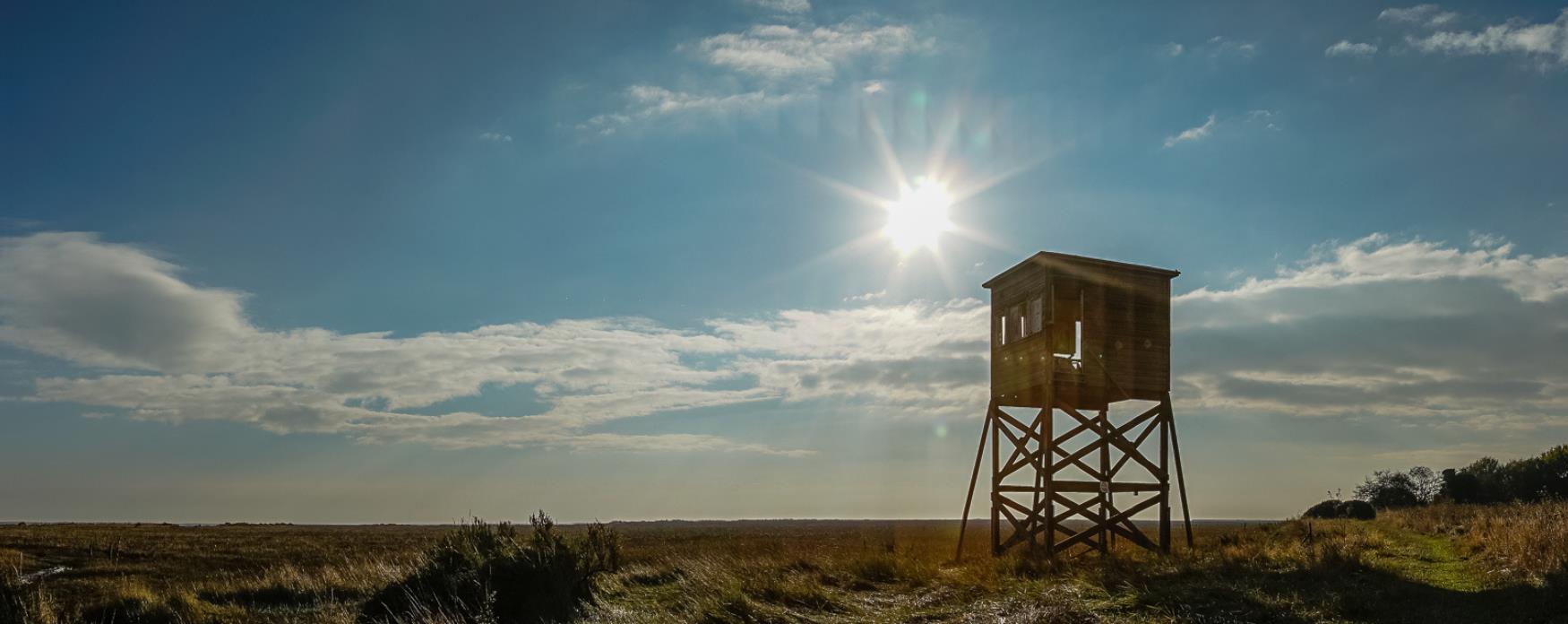For anyone who is interested in military or wartime history, the Maldon District is packed with interesting places to visit
From a well-preserved First World War airfield and a museum dedicated to military history, to a secret naval air base and a unique two-storey pillbox, you will find evidence of the Maldon District's wartime history wherever you go.
First World War air bases
For those interested in First World War history, we are proud to have the unique Stow Maries Great War Aerodrome on our list of must-sees – it’s the largest surviving First World War aerodrome in Europe. Originally opened in 1916 as home to B Flight of No 37(HD) Squadron, Royal Flying Corps, the aerodrome saw the birth of the Air Defence of Great Britain in response to the first raids by Zeppelins and Gotha bombers on London and the South East.
Stow Maries played a key role in the Battle for Britain (the first London Blitz) the following year. It was at Stow Maries that No 37 Squadron transitioned from being the Royal Flying Corps to the Royal Air Force on 1 April 1918. The RAF closed the base in May 1919 and the site reverted to being just Flambirds Farm (you may recognise that name from the Flambards books and TV series by local author K M Peyton, who was inspired by the airbase). The buildings were repurposed and the airfield turned to pasture, with the memories of the Great War slowly merging back into the landscape.
.png)
- Original First World War buildings at Stow Maries Great War Aerodrome, captured on a misty morning by David Davies
Then, in 2012, the airfield was rediscovered and given a Grade II* Listed rating, saved for the future by a purpose-created charity that now runs this excellent museum with fascinating exhibits, a great café and regular flying events.
.png)
- You can enjoy a cuppa or a lunch in the Airmen's Mess Cafe, image courtesy of Stow Maries Great War Aerodrome
Another First World War airbase was situated in Goldhanger at Gardeners Farm. This airfield was first used as a night landing ground by the Royal Naval Air Service, and in March 1916 was handed over to the Royal Flying Corps and became home to C Flight of 37 Squadron, which served as an eastern line of defence for London against raids by aircraft and airships. Little now remains on site, although you can visit Gardeners Farm Shop there and see a memorial plaque.
Its memory lives on, however, at St George’s Church, in Heybridge Basin, which was made from an Armstrong Hut that served as the Sergeants’ Mess hut on Goldhanger Airfield. After the war, the hut was purchased by Edmund Bentall, owner of the engineering firm in Heybridge, for use as a church in memory of his son Ernest Bentall, who was killed in action in France aged 18. The church opened in 1920 and has a beautiful stained glass east window depicting St George, and incorporating Second Lieutenant Bentall’s regimental badge, attributed to Arthur Anselm Orr. Locals believe that St George’s face was modelled on Ernest.
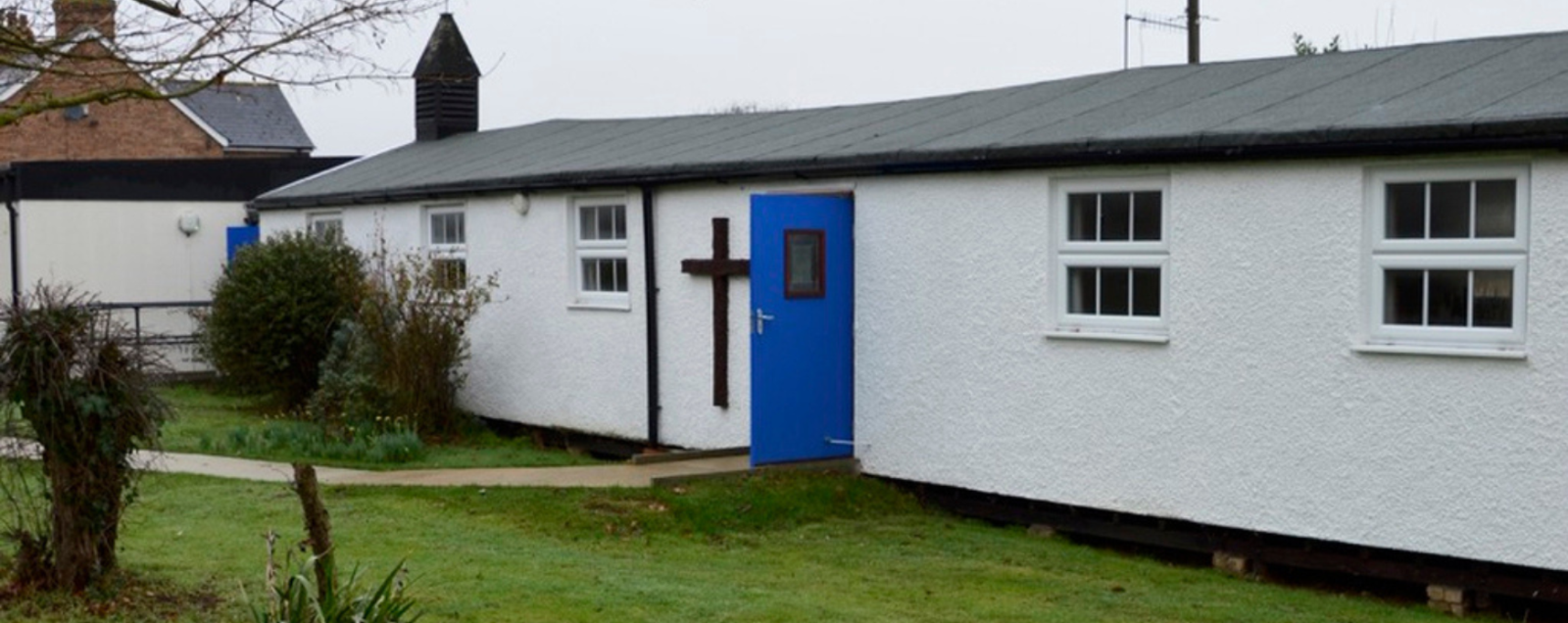
- St George's Church in Heybridge Basin was made from a converted Armstrong Hut taken from Goldhanger Airfield
If you head into the village of Goldhanger itself, look out for the village sign which features the iron plough, invented by William Bentall (grandfather of Edmund Bentall) and a First World War aircraft from Goldhanger Airfield, along with Thames Barges and St Peter's Church tower.
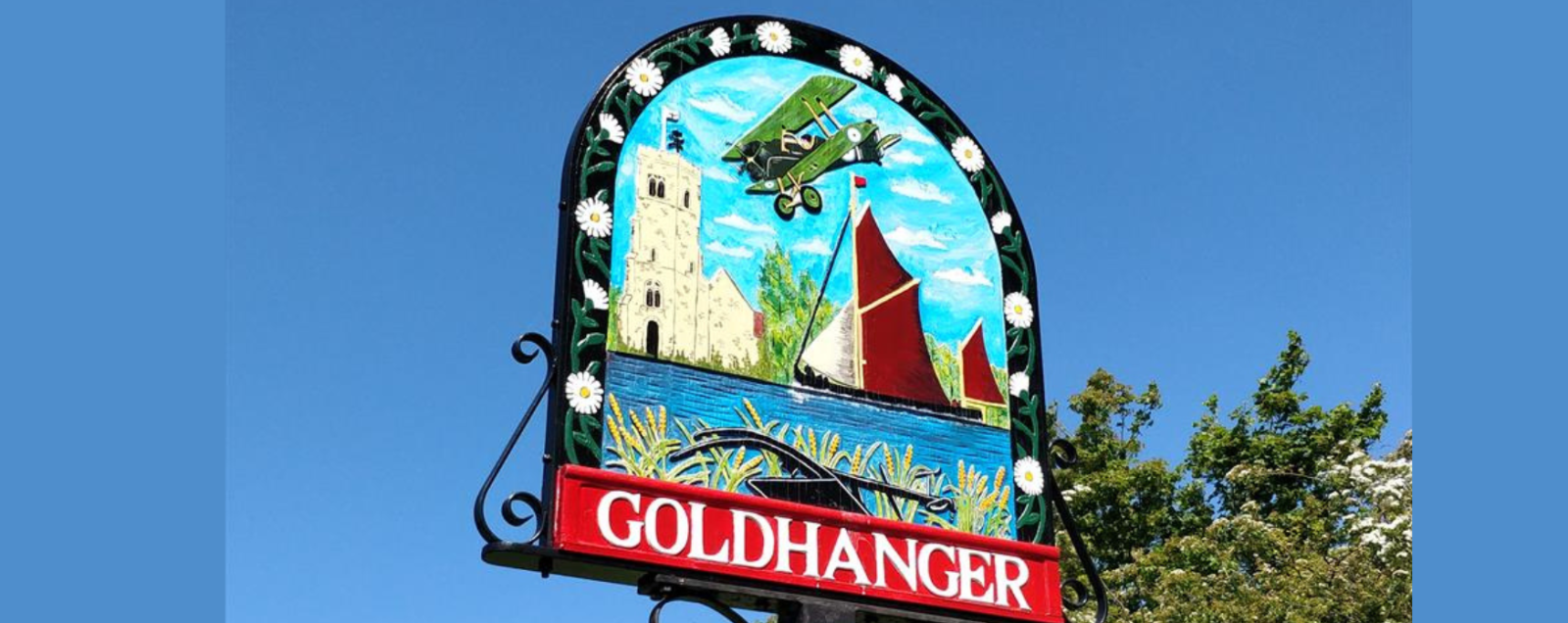
Little ships legacy
Moving on to the Second World War, although little evidence now remains, Burnham-on-Crouch played a bit part in the Dunkirk evacuations, with four “little ships” coming from the town rescuing nearly 600 stranded soldiers from death on the beaches of France – you can see a memorial to their crews’ bravery on the Quay and learn more about the rescue in the Burnham-on-Crouch & District Museum.
- The oyster smack Vanguard, built in the town and used by the Burnham Oyster Company, is badly decayed but awaiting restoration.
- The yacht Ma Joie made the perilous journey only to be wrecked on the beaches of Dunkirk
- The oyster smack Sea Salter survived the ordeal but was eventually broken for scrap.
- The final vessel, the yacht Chantecler, was built in Burnham and joined the rescue from Ramsgate. She is still in regular use as a pleasure vessel in The Netherlands.
You can see where three of the four vessels set sail on their mission of mercy at the Petticrow Steps near the Royal Corinthian Yacht Club.
Two of the historic Thames Sailing Barges now based in Maldon and operated by the Thames Sailing Barge Trust, also took part in the D-Day evacuations (or attempted to do so). Pudge, a wooden barge built in 1932, was requisitioned in 1940 and towed to Dunkirk by tug to aid the evacuation. Despite being blown out of the water by an explosion, Pudge landed the right way up and successful saved survivors from the beaches. The older Centaur barge, built in 1895, was damaged by a tug at Dover while being readied for Dunkirk and had to return to Maldon for repair, missing the historic evacuation. However Centaur, along with the Thames Sailing Barge Kitty, which is now moored at North Fambridge, did see active service during the First World War, ferrying goods and supplies to France. Unlucky Centaur even managed to have a crash in the fog with one of the CMBs from Osea Island, although both vessels survived to tell the tale.
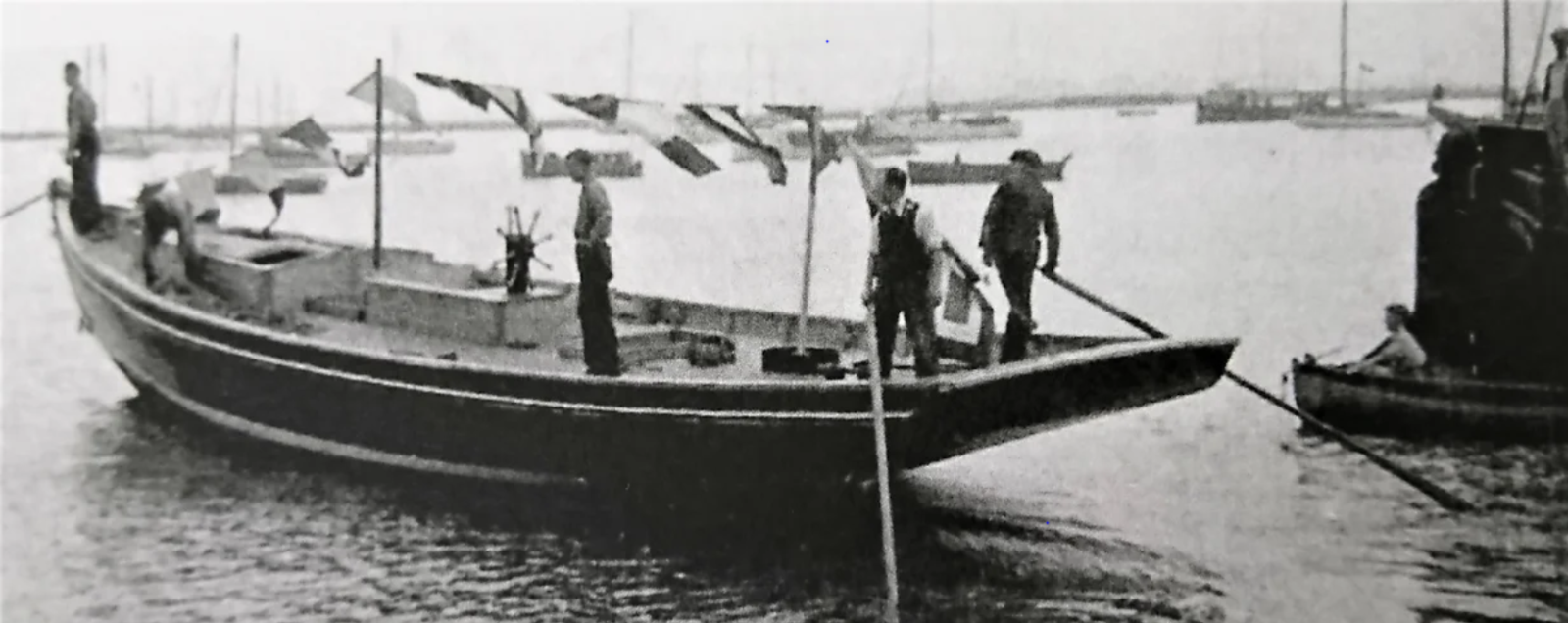
Another unusual piece of wartime history can be found on the seawall heading out of Burnham-on-Crouch towards Bradwell-on-Sea. Around 4 miles from Burnham you will come to a unique hexagonal, two-storey control/observation tower and an accompanying double-ended pillbox, both now Listed. The pillbox was built in 1940 and housed the firing equipment for the original two warheads deployed at Holliwell Point. With the expansion of the minefield in the River Crouch estuary in 1941, the impressive control tower was purpose-built, the only one of its kind in England. It features 17 machine gun apertures to give all-round defence, plus a steel door and 60cm thick walls. Access only on foot along the sea wall.
RAF Bradwell Bay
The tiny village of Bradwell-on-Sea, often known as Bradwell-Juxta-Mare in those days, was home to RAF Bradwell Bay, which had an important role in the Second World War. Initially, the Dengie Flats were used as a firing range from the 1930s with a small landing strip for planes to refuel. This was upgraded into a full RAF base in November 1941, and a variety of air squadrons were based here during the war along with up to 2,000 staff. As it was so close to the coast, it was often used for emergency landings of damaged aircraft returning from the continent, including B17 Bombers and their American crew, some of whom were based nearby at Birch, Rivenhall and Boreham, now immortalised in the Masters of the Air TV series.

- In September 1942, No 418 Squadron, RCAF, was operating Boston IIIs on night intruder sorties from Bradwell Bay. © IWM CH 7210 Imperial War Museum
You can still see some of the original wartime buildings, including the crumbling remains of a 1930s control tower near to St Peter’s Chapel, although these are not open to the public. What you definitely shouldn’t miss is a visit to the poignant war memorial, in the shape of a crashed Mosquito aircraft. Members of the RAF Bradwell Bay Preservation Group have regular exhibitions at The Othona Community and are raising funds for a permanent museum on the airfield site.
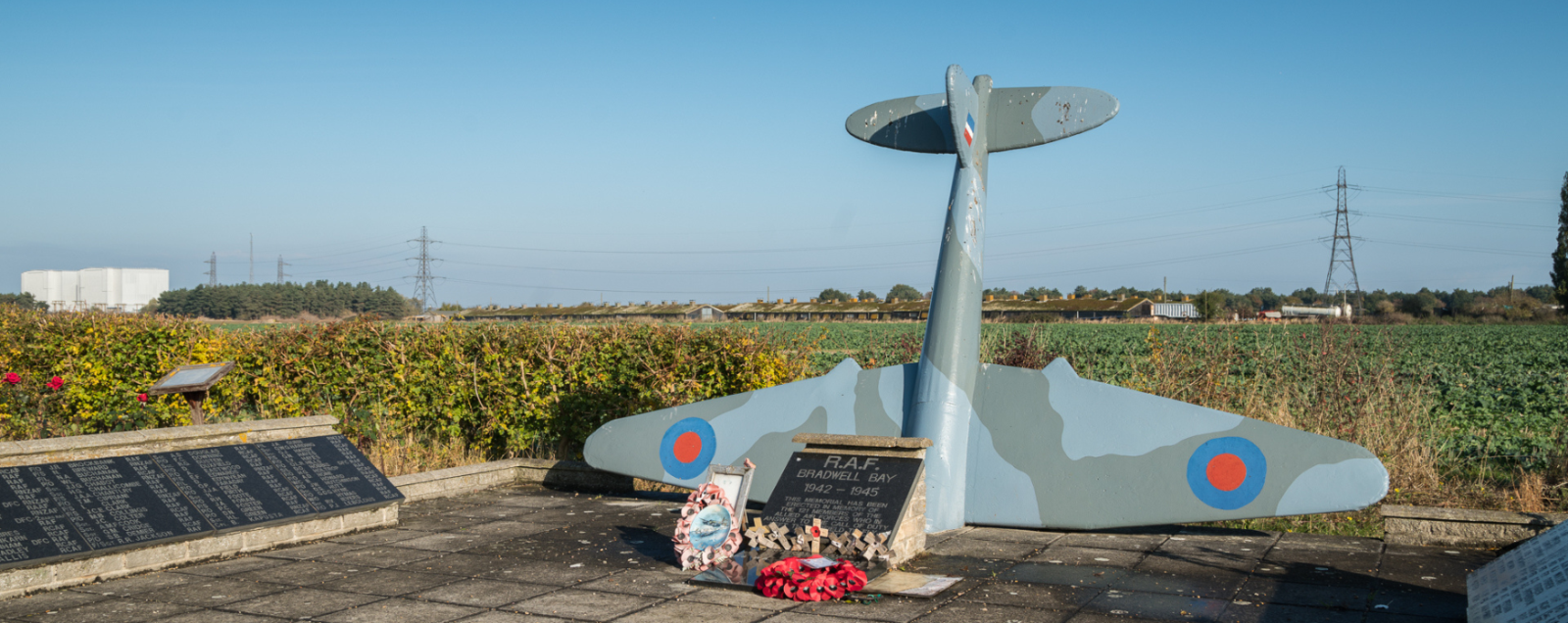
- The poignant war memorial at Bradwell Bay has the names of 132 members of the Allied Forces "who left this airfield to fly into the blue forever"
D-Day reminders
If you look out to sea from the beach at Bradwell-on-Sea you can spot some old ferro-concrete barges being used as a tide break. These are likely to have seen action in the D-Day Landings when they were towed out to create two massive Mulberry Harbours that supported the Allied operation in France. Another one can be found stranded on a marshy piece of land next to Fambridge Yacht Haven - you can find out more at Fambridge Concrete Barge - Beyond the Point. North Fambridge is also the home of the remains of an experimental searchlight, a steel structure 50 feet across and seven feet high which would have had 12 giant mirrors. The experiment was scrapped in 1940 when it was discovered that on cloudy nights the light was reflected back to the ground illuminating the area for the convenience of the Nazi bombers! Of the many built in Essex, the one that can still be glimpsed through the vegetation at Kitts Hill, north of the village, is the best preserved, and can be seen on Google Earth or at What3Words adjuster.blushed.poses.
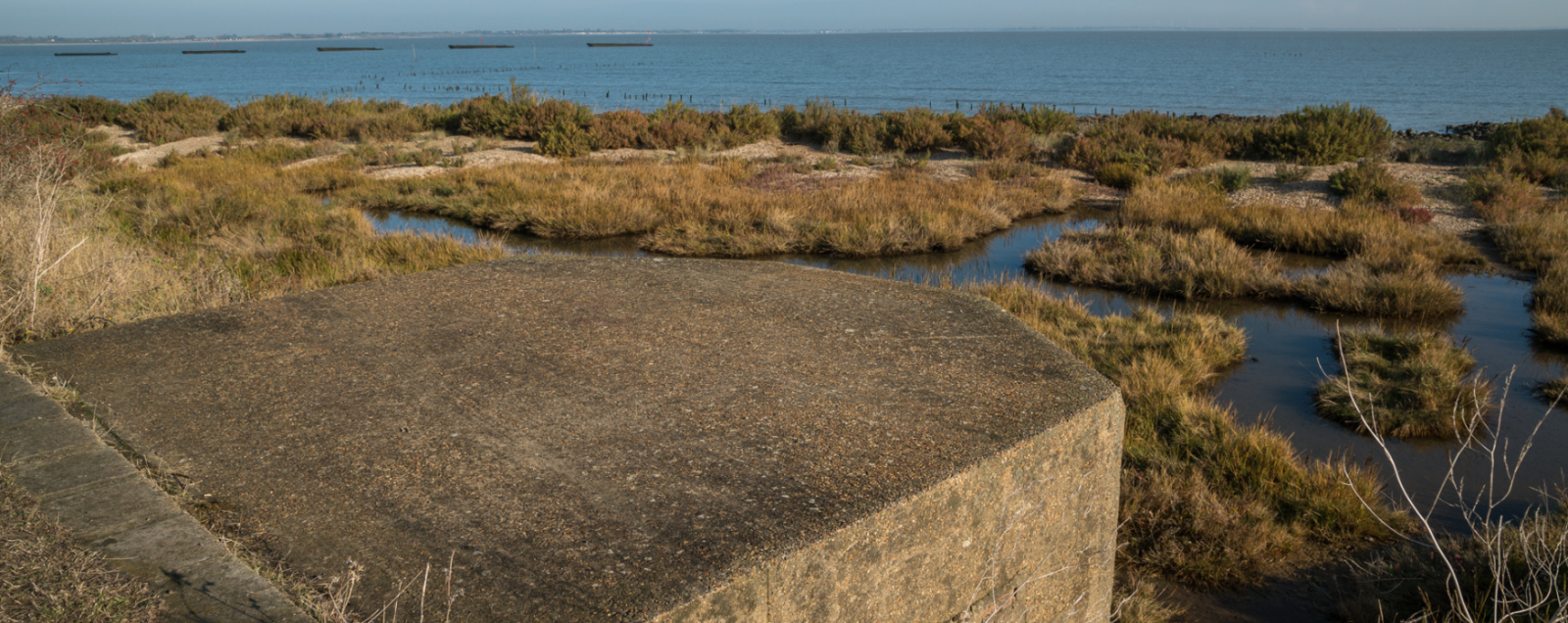
- The concrete barges off the beach at Bradwell-on-Sea were part of the Mulberry Harbours used in the D-Day landings, photo by Marion Sidebottom
Two massive reminders of D-Day in the district may pass almost unnoticed – Stone Point in St Lawrence and Stansgate Abbey near Steeple, were both sites for D-Day Embarkation Hards. These areas of reinforced beach were built around southern Britain in the summer of 1942 in preparation for the Normandy landings in June 1944.
Each hard is around 80m wide and is made from a solid concrete area on the land side, while running down to the sea, small, individual concrete squares create a hard surface to provide traction for landing vehicles. Both sites were used for weekly practice runs, with Royal Naval Beach Commandos embarking from the hards, complete with landing crafts and vehicles, then disembarking on the shores of Osea Island opposite.
There were 68 hards around the south coast, many of which were ripped up when the war was over; the two in the Maldon District, however, found a new role as ideal locations for yacht clubs. Marconi Sailing Club now occupies the hard at Stansgate Abbey, while the one at St Lawrence Bay now forms the berthing area for Stone Sailing Club. While the yacht club areas do not have public access, footpaths and beach walking allow you to get a glimpse of this fantastic piece of wartime history.
.png)
- The D-Day embarkation hards at Stone Point, above, and Stansgate, are areas of beach hardened with concrete that allowed troops and heavy equipment to board ships
Secret naval base
Osea Island has always been a secret, hidden place. Connected to the mainline by a tidal causeway that provided a film location for The Third Day with Jude Law and The Woman in Black starring Daniel Radcliffe, it has been a rehab centre, a recording studio for stars and is now the secluded and luxurious Osea Island Resort.
It was also a top secret torpedo boat base. In 1917 it was requisitioned by the admiralty for use as a top-secret naval base, named S.S. Osea. At one point, more than 1,000 service people were stationed there with 40 boats, and yet people on the mainland were supposedly unaware of its existence. New seaplanes were also tested here.
The island was a base for CMBs, Coastal Motor Boats, small boats also known as skimmers that carried torpedoes or mines. Captain Augustus Agar, who was stationed at Osea, was awarded the Victoria Cross for his bravery rescuing an MI6 agent from Petrograd in a CMB, recounted in his autobiography Baltic Episode. The island was occupied by the military once again in the Second World War, with a number of pillboxes constructed there, and it suffered a strike from a V2 rocket.
The tidal causeway and island are only accessible to guests at the Osea Island Resort, but you can still see some reminders of the naval base on the mainland. The barracks buildings, known as Armstrong Huts, were repurposed into local homes that still stand around Wharf Road, Basin Road and Goldhanger Road in Heybridge.
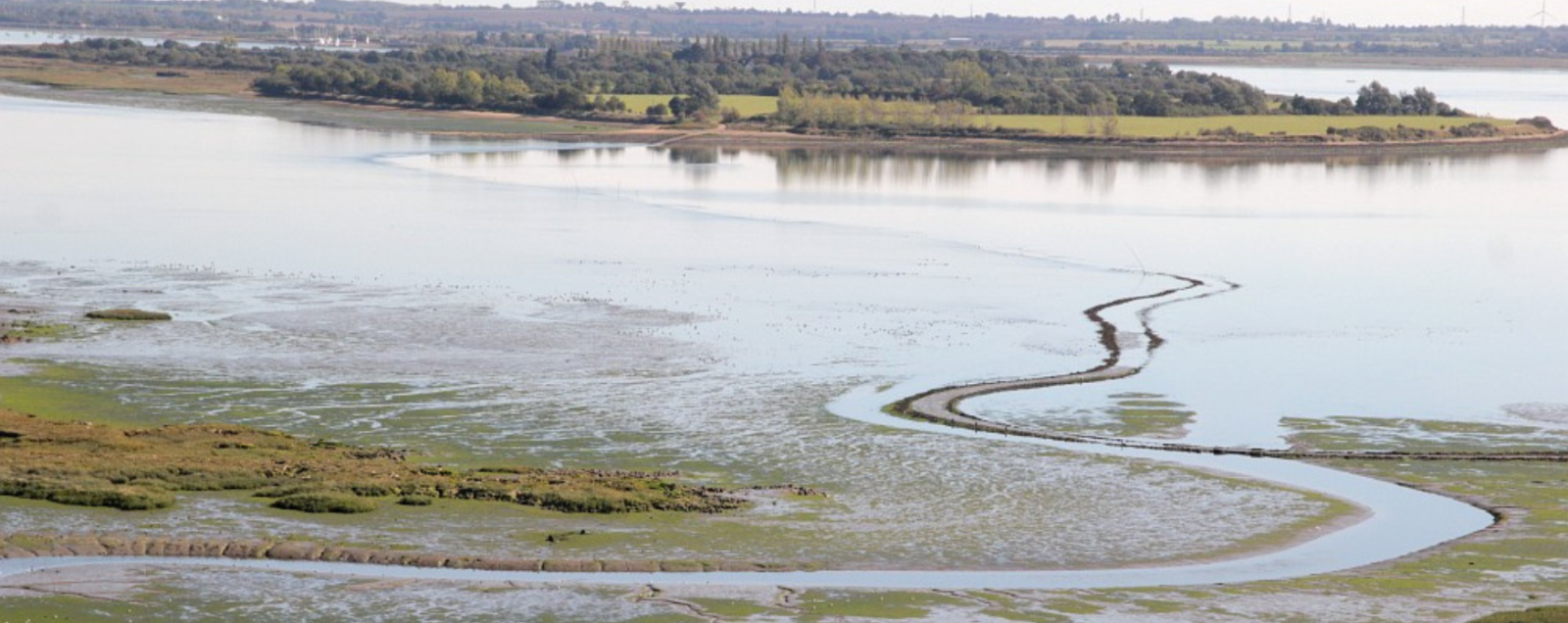
- The private tidal causeway to Osea Island, now a luxury retreat but once home to a secret naval base
Throughout the Maldon District, the memory of those who served in the armed forces is kept alive through village and town war memorials and the Commonwealth War Graves you can find in most cemeteries and churchyards. These are all listed on this site, just use the top search facility.
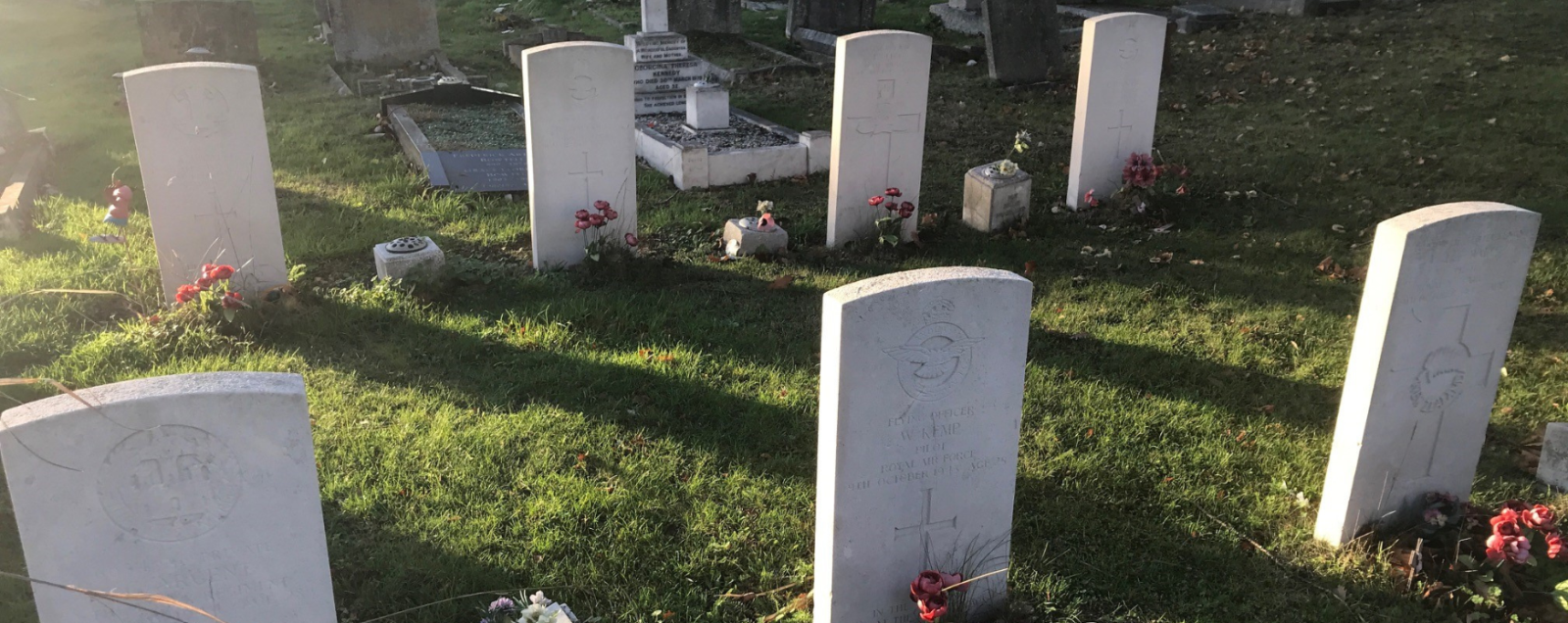
Finally, if you are visiting Maldon, make sure to visit the fascinating Combined Military Services Museum, which has one of the finest collections of operational spy equipment in the world, including items used by secrete agents during the Second World War. Look out too, for the Steam Tug Brent, below, moored at Hythe Quay. The Brent was built ready to play her part in the war effort, but by the time she was launched in 1945 she was no longer needed and went instead to the Port of London Authority.
